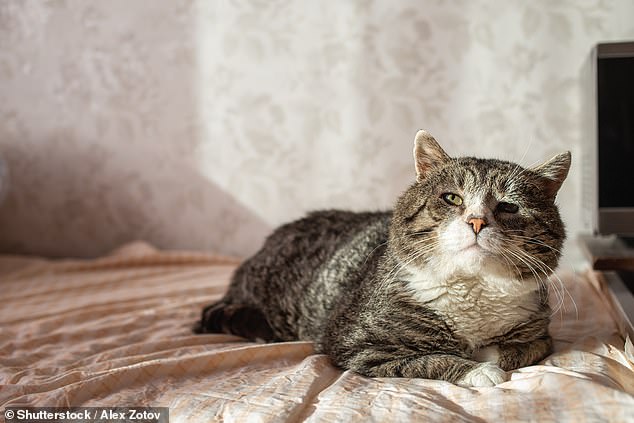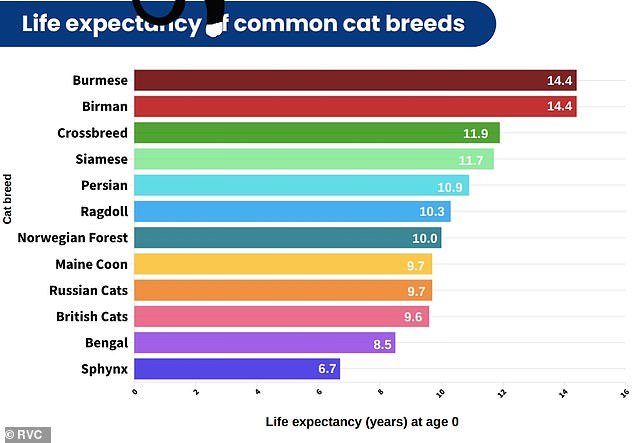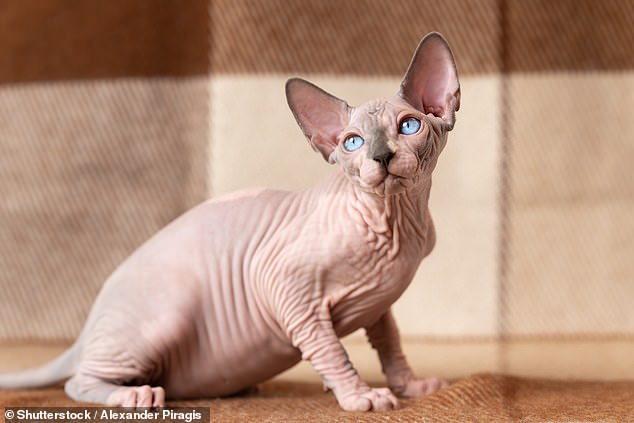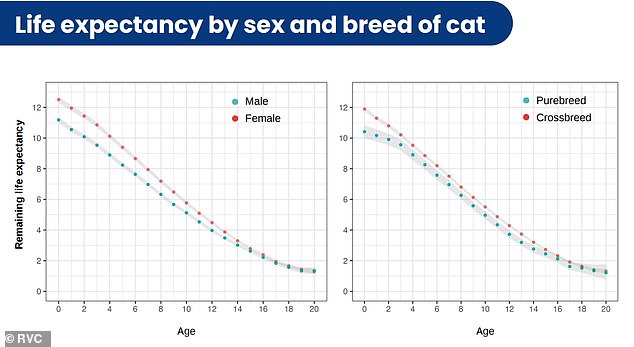- For the first time, researchers have produced ‘life tables’ for cats in the UK
- These can be used to estimate the remaining life expectancy of different breeds
They say cats have nine lives.
But now, owners can work out exactly how much longer their beloved pet is expected to live.
For the first time, researchers have produced ‘life tables’ for companion cats in the UK which can estimate the remaining life expectancy of different breeds.
To do this, a team from the Royal Veterinary College (RVC) in London along with researchers from the National Chung Hsing University in Taiwan analysed records from 7,396 cats in the UK that died between January 2019 and March 2021.
The results were then broken down by breed and sex and presented in life tables.

They say cats have nine lives. But now, owners can work out exactly how much longer their beloved pet is expected to live (stock image)

For the first time, researchers have produced ‘life tables’ for companion cats in the UK which can estimate the remaining life expectancy of different breeds
Analysis revealed the overall average life expectancy for UK companion cats, from when they are born, is 11.7 years.
The researchers also found that female cats were expected to live 1.33 years longer than males.
Burmese and Birman breeds had the greatest life expectancy at 14.4 years, followed by Crossbreeds at 11.9 years and Siamese at 11.7 years.
Meanwhile Sphynx cats had the shortest life expectancy at just 6.8 years.
Factors such as being a purebred and either overweight or too thin were also linked to a shortened life expectancy.
Domestic shorthair cats – the most popular breed in the UK – was classed as ‘Crossbred’ for the study, and therefore have a life expectancy of nearly 12 years.
The team said this information on remaining expected life can be used for cats from any age of interest and can help, for example, prospective owners and cat rehoming centres to predict how much longer a cat may live.
They also said their findings represent a ‘major step forward’ in how we understand the lifespan of companion cats and can help owners and vets when making decisions about treatment.

Burmese and Birman breeds had the greatest life expectancy at 14.4 years, followed by Crossbreeds at 11.9 years and Siamese at 11.7 years. Sphynx cats had the shortest life expectancy at just 6.8 years (stock image)

Domestic shorthair cats – the most popular breed in the UK – was classed as ‘Crossbred’ for the study, and therefore have a life expectancy of nearly 12 years
Dr Kendy Teng, lead author of the study, said: ‘The development of life tables for the UK companion cat population represents a significant milestone in understanding the life of cats.
‘Knowing the expected lifespan of their cats, we’re not just raising awareness, we’re helping the owners to make ‘pawsitive’ decisions for their cats.’
Dr Dan O’Neill, Associate Professor of Companion Animal Epidemiology at RVC, and co-author of the study, said: ‘Since the early civilisation of man, predicting the future has been one of our greatest fascinations.
‘These new life tables finally enable owners of cats to do just this and to predict the future life expectancy for their cats based on novel scientific methods and the power of Big Data.’










